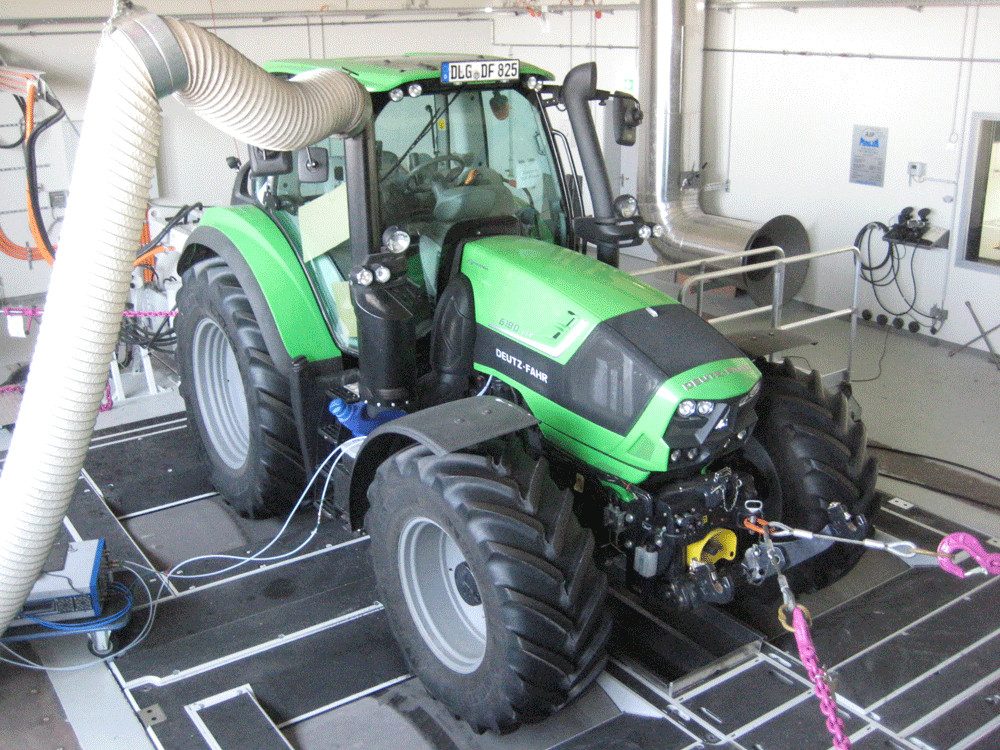Diesel: Better than its reputation
Nowadays, diesel engines have a very bad reputation. Will the discussion eventually involve agricultural machinery too?
It’s important that we are as careful as possible in protecting our limited fossil resources. Because it’s more efficient and the fuel has a higher calorific value, the diesel engine has a very clear advantage over the petrol engine in agriculture. And here it can be seen that introduction of mandatory exhaust standards for reducing emissions has led to poorer overall efficiency and thus increased fuel consumption, despite efficiency increases for the whole vehicle in other respects. Behind this is an interaction between soot particle and nitrogen oxide emissions. Engines, for example, were equipped with exhaust gas recirculation. This reduces combustion temperature, producing less nitrogen oxide which in turn gives poorer overall combustion efficiency and thus higher fuel consumption for the same output. In summary: reduction of specific exhaust emissions was achieved at the cost of fuel efficiency.
AdBlue: reduced diesel consumption with good performance
With the 2010 stage IIIB exhaust standard and associated SCR technology, the core of which is the injection of AdBlue into exhaust gas, this nonsense could at last be stopped. Diesel consumption could be reduced. The engine could once again do what it is designed for: i.e. to retrieve as much power as possible from the diesel in the tank, without considering nitrogen oxide emissions, these being reduced downstream through AdBlue addition. In this way optimised interaction of engine and downstream treatment of exhaust gases with AdBlue can reduce diesel fuel consumption tendentially, whether the diesel engine is in a private vehicle or powering agricultural machinery. The necessary development costs had to be then passed on by the agricultural engineering sector to farmers.
The DLG PowerMix roller test stand has started its work. It replaces the previous test track. But don't we need field recording too?
As early as 2012 we carried out mobile exhaust emission recordings on DPF and SCR equipped tractors working out on the field under normal conditions, but also during barn work and road travel. At that time, the aim was to compare exhaust emissions, e.g. comparing mowing grassland in the field with PowerMix mowing cycle tests to find how similar the results were so that an alternative to possibly mandatory exhaust emission recording in the field could be identified. The result was very good similarity between the emissions during practical operations and those recorded in DLG PowerMix tests.
Practical-oriented results with the DLG PowerMix roller test stand
Something else learned during the field tests was the complication of mobile exhaust emission recording during field operations, beginning with adaptation and installation of recording technology through to evaluation of the results. It became clear that exhaust emission recordings on the tractor under real conditions were not necessary, the same results being available from a DLG PowerMix test. The knowledge gained in these trials contributed to the development of PowerMix 2.0. The exhaust emissions could now be measured over a mobile emission recording instrument built onto the roller test stand. Where required, however, we can also use the same recording technology to measure emissions out in the field.
Within the numerous validation tests in recent years towards transference of DLG PowerMix 1.0 from test track or road onto the roller test stand, we have tested numerous comparisons of tractors. The resultant fuel consumption from recordings on the road and the roller test stand showed a maximum difference of 4%. In fact, the specific overall result indicating relationship between amount of fuel injected and work delivered differed only by approx. 1%.
What's wrong with the exhaust discussions regarding farm machinery?
Exhaust legislation, which has not really been thought through, can reduce specific exhaust emissions, but also lead to higher fuel consumption, as was the case with exhaust stage 3a. Exhaust gas legislation concentrating on the engine alone leads to relatively high costs passed on by the manufacturers to farmers. If instead, legislation is expanded to cover the entire vehicle, i.e. looking at the exhaust emissions based on the actual work done, this would give the manufacturer a greater degree of freedom. The entire vehicle could then be optimised for the legislation, but also for practical operation by the farmer. Available for manufacturers is a development platform for optimising their machines. In practice, this platform could also serve as an alternative to recording exhaust emissions during practical operation, currently seen as the “silver bullet” with cars.
What do you drive privately – a diesel or a petrol vehicle?
I drive a diesel because at higher mileages there is really no alternative and I'm basically satisfied with the technology. Especially in agriculture, I see that adaptation and repositioning the legislation away from engine-based thinking to a concept covering the entire vehicle and use of alternative synthetic and biogenic fuels offers possibilities for further reducing CO 2 emissions without again causing higher development costs.
The questions were asked by Dr Frank Volz.




